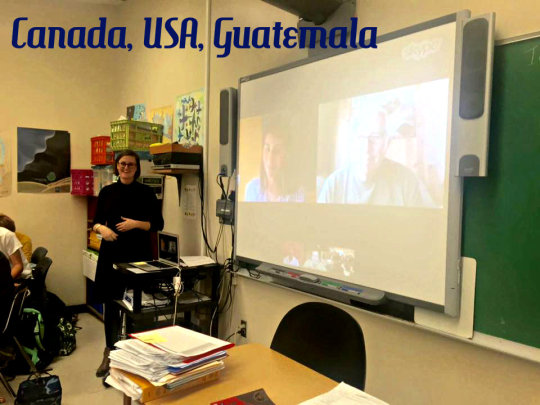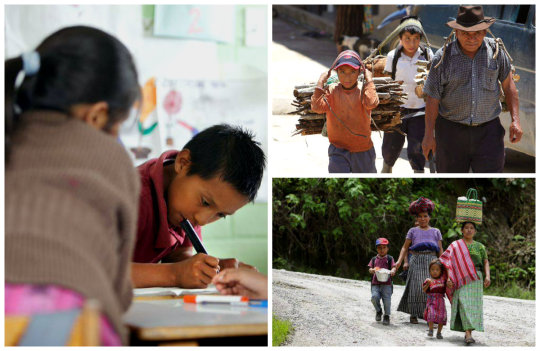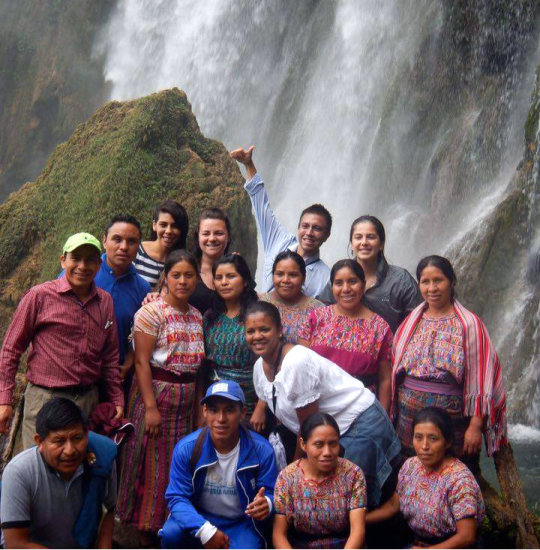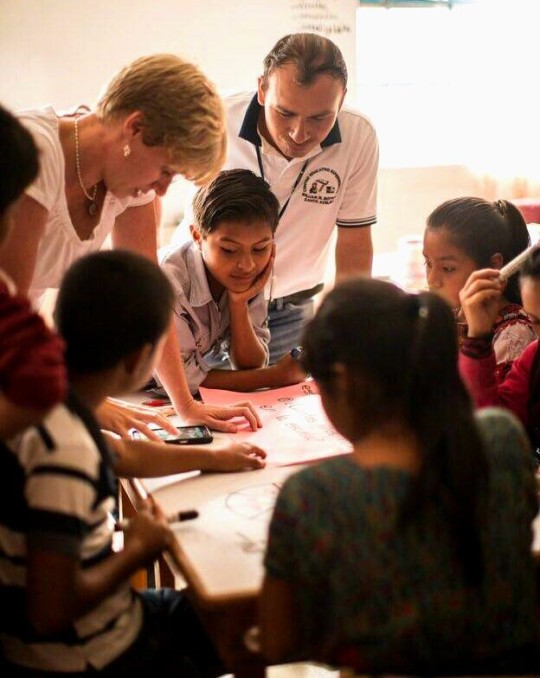21 Dec The International Classroom Meets Rural Communities in Guatemala
Written by Lucía Dávila, Guatemala City,
Guatemala
On December 9, 2015, I had the opportunity to participate in a conference about agroscience and culture for the 7th grade students of North Duplin Junior-Senior High School, located in Mount Olive, North
Carolina.
This opportunity was created by my friend and colleague Becky Adams, T2T-I’s Director of Operations. She shared her idea of creating a cultural connection between the NC Latino students and their classmates through agricultural topics. T2T-I’s Project Coordinator Hans del Cid joined me on the
Guatemalan side of the project.
I must say that I am definitely not an agricultural expert, and the few things I know were learned during an internship with an NGO called Guatemala Hope.
Guatemala Hope is a Canadian nonprofit dedicated to improving the quality of life and self-sufficiency of villagers in areas of Suchitepéquez, Guatemala. Their focus is on health, education and economic conditions. They work collaboratively in villages where agriculture drives most economic activity. As a result, their interventions catalyze long term growth in agriculture by reducing inputs, improving production methods, increasing yields, and developing better markets.
Any wonder why they were the first ones I called for help with this amazing conference?

I got an immediate response from my dear friends Carolyn Fuerth and Harold Ledermueller of Guatemala Hope, who were willing to share information about the current situation in the communities where they are working. They also explained us the importance of technological innovations in agriculture and agroscience.
My next step was to incorporate Guatemala Hope’s useful contribution with my own experiences in rural areas of Guatemala. Having served as an interpreter with Teachers2Teachers – International, I had some insight into life in smaller, less accessible regions of this country.
Once the day for the conference arrived, thanks to technological advances, we had Canada, the USA, and Guatemala all together in the same classroom. To be honest, I felt like we were in the United Nations’ territory, and the students served as wonderful ambassadors.

These are questions about rural communities and their schools in Guatemala, with my responses following….
1. What is a general description of a rural community in Guatemala? What do the schools look like there?
Depending on the different areas you visit, you will find people with distinctive traditions and ways of
life. It is different if you visit the highlands of Guatemala than if you visit
the south part of our country. People in the highlands are a lot more conservative
than in the south… even the weather is different depending on the place you are
living in, but I guess that’s just how it is everywhere in the world, isn’t it?
Most of the people from the rural areas in Guatemala are Mayans, and they are dedicated to agriculture,
handcrafts, carpentry, and other manual trades.
Since most of the villages are far away from the city, they don’t usually have technology or machines, and they have to work everything with their own hands. Women mostly weave or sell
at the market, and of course they take care of the house, the children, the chores…

A lot of villages in the rural area of Guatemala have elementary schools only. One of the main
challenges is distance… teachers and the students sometimes live far away from
the school, so they walk or ride a chicken bus, and it takes them sometimes more
than 2 hours every day to get to school.
If students want to go to middle school or high school, they need to look for a town that offers them and
then leave their home, their family, and move to this new place to be able to continue studying.

2. Why do people both go to school and work at home? Note that some teachers also teach for part of the day and work at home for the other part of the day.
Most of the people living in the rural areas of Guatemala are really poor and families cannot afford to
send their children to school, but if they study, they need to help at home to be able to keep going to school.
The girls need to help at home by taking care of their little siblings and doing the chores while mom is
selling at the market. The boys need to help their dad at the fields to be able to harvest more, get all the crops, keep cultivating, planting, and cover a lot more territory in less time.

It is the same thing for teachers! They can teach in the morning at school, but they also have families,
they also have fields… and who is going to take care of that if they don’t do it?

Having the chance to only study without worrying about anything else is a luxury here in Guatemala that most children don’t have. The challenges they need to face to be able to go to school are huge. It is not only a matter of money but also a matter of culture, language, and understanding.
This brings me to the next point: the needs I have seen in the communities I have visited.
3. As Guatemalans yourselves, what strengths and needs have you seen in the communities you’ve visited?
In Guatemala we have 25 linguistic communities, with Spanish as the official language. We have many Mayan languages that are spoken by a relatively limited number of people. Therefore,
communicating with each other is really, really hard, and we miss a lot because
of the culture and language gap.
I have seen that what people in the rural area need is not only information in their language, but also understanding…
They are amazing people who work very hard and would do anything for their children and their community. They are willing to learn, and the only thing they need is the opportunity to grow.
We just need to take the time to try to understand each other and communicate, and to be interested on
the different ways others do things. Once we do that, we will all learn from
each other and will grow together.

“The success of rural community development and progress within a society has a lot to do
with the people involved, their commitment and dedication, the level of
awareness and desire for change, structures and laws, and the availability of
access to resources and opportunities among other factors.” – Maryam Jamali
I believe the youth of Guatemala are capable of breaking the poverty and division cycle by studying, finishing school, influencing others, and becoming great leaders for their communities. I believe teachers can provide the tools for them to do all of this!

For more pictures click here
No Comments